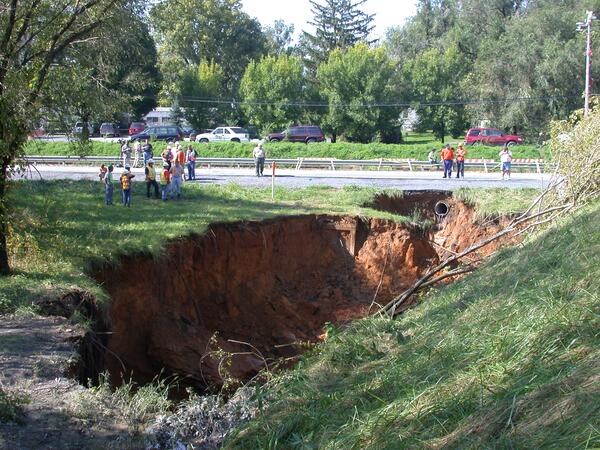I have (or think I have) a sinkhole on my property. What should I do?
While the USGS studies the types of rocks that can potentially form sinkholes, we don’t investigate individual sinkholes on private property.
First, rule out human causes for your feature. Some sinkholes are caused by leaky underground pipes (talk to your utility company) and some are old construction pits or other buried materials that have settled.
If you’re confident of a natural cause for your sinkhole, options include:
- Check your homeowner's insurance policy to see if you might be covered (depending on which state you live in, most insurance policies don't cover damage due to natural sinkholes).
- If you're concerned about damage to gas, electric, water, or sewer lines, contact the appropriate utility company.
- Contact your State Geological Survey. They are the experts on the geology of your area and they might be able to explain why a sinkhole is forming at your location. Some states have extensive online information about sinkholes, including a place to report them.
- You might need to hire a professional geologist or geotechnical engineer to help you determine exactly what’s happening and how it might be mitigated.
Learn more:
Updated Date: February 4, 2025

















